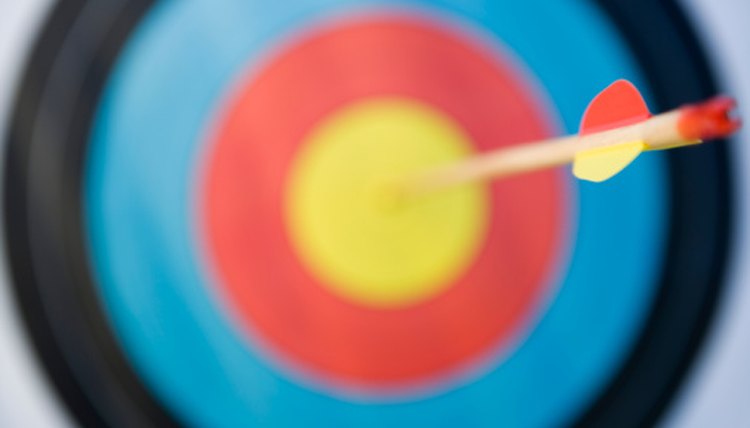What Do the Numbers on Arrows Mean?

The specific dimensions of an arrow greatly effect how it flies, from the measurement of the point to those of the shaft of the arrow. Two of these dimensions, specifically the diameter of the shaft and the thickness of the shaft outer wall, are written in a direct form on the arrow itself.
Shaft Size
Typically there is a four-digit number written on the shaft of an arrow (e.g., "2413"). The first two of these numbers refer to the outside diameter of the arrow shaft measured in 64ths of an inch. An arrow labeled as "2413" has an outer diameter of 24/64ths of an inch. Thus the larger the first two numbers, the thicker the arrow shaft, albeit by possibly a very small amount.
Outer Wall Size
The second two of the four digits refer to the thickness of the wall of the arrow shaft in 1/1,000 inch. Looking an an arrow marked "2413," this gives the arrow an outer wall thickness of 13/1,000 inch, or .013 inches.
Spine and Weight
Along with the shaft dimensions, the spine of the arrow plays a part in the flight. There are actually two different types of arrows spines: static and dynamic. The static spine is measured by the amount of flex in the center of the arrow, while a 1.94-pound (800-gram) object is suspended from it. The number of inches the arrow bends is the measurement for the static spine. The dynamic spine refers to how the arrow reacts to the stored energy of the bow when it's fired. Factors that impact the dynamic spine include how the arrow is released (by hand or by machine), the energy applied to the bow, the bow's cam system, the weight of the different sections of the arrow and the weight of the arrow, which in turn is affected by the thickness of the arrow shaft and of the shaft's outer walls. Since the dynamic spine has numerous variables to measure, an arrow's spine is typically measured in terms of static spine.
Importance
The spine of an arrow plays a role in the tuning, shooting and grouping of arrows, and using the wrong size arrows for a bow can lead to poor accuracy and grouping of the shots. Using arrows of the same size and thickness leads to consistency of flight and handling, which, if arrows are properly aimed and conditions are similar between shots, allows for arrows to fly in the same way and group tightly upon hitting.
References
Writer Bio
Jess Kroll has been writing since 2005. He has contributed to "Hawaii Independent," "Honolulu Weekly" and "News Drops," as well as numerous websites. His prose, poetry and essays have been published in numerous journals and literary magazines. Kroll holds a Master of Fine Arts in writing from the University of San Francisco.
